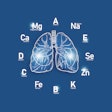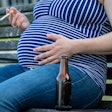
Exposure to unhealthy air quality can negatively impact a child’s lungs, causing or exacerbating respiratory diseases such as asthma and bronchitis. In a recent poll, parents showed concern over the impact of poor air quality on their children’s health. That’s according to a new report released by the University of Michigan Health C.S. Mott Children’s Hospital in Ann Arbor.
According to The Mott National Poll Report, most parents (73%) are concerned about the impact of air quality problems on their child’s health; fewer (63%) feel they know what actions to take regarding air quality problems. Two-thirds (67%) say that in the past two years they have experienced at least one day with poor or unhealthy air quality in their area. Parents believe the poor air quality was related to wildfires (81%), excessive heat (42%), and seasonal changes such as pollen (34%), elevated ozone levels (14%), and industrial pollution (11%). Parents cite news or weather reports (92%) as their main information source about air quality problems.
The poll sampled parents of children 0-18 years about protecting children’s health when air quality is poor. Parents responded to the poll by indicating they kept their windows closed (69%) and limited their child’s time outdoors (68%), had their child avoid strenuous outdoor activities (47%), used a home air filter (19%), or had their child wear a mask when outdoors (11%) to protect their child’s health while air quality was poor. Additionally, 14% of the parents polled said they took no action. Among parents reporting poor air quality in their area, nearly 1 in 5 (18%) believe it affected their child’s health.
Parents who have not experienced poor air quality in their area say they would consider taking steps to protect their child’s health if there were an alert from local news or weather (57%) or a government agency (43%), if they could see or smell a change in air quality (49%), or if they received guidance from their child’s doctor (37%) or school (30%).
Only 21% of parents report their child’s school has a policy with steps they will take when the air quality is unhealthy; most (61%) do not know if there is a school policy in place. When air quality is unhealthy, most parents think schools should move recess and physical education indoors (74%) and cancel outdoor sports and activities (66%); fewer parents support an individualized approach where parents would decide whether to remove their child from outdoor sports/activities (45%). About one-quarter of parents (27%) think schools should encourage children to wear masks outside when air quality is poor, while 8% do not support any school action.
Because children breathe faster than adults, their lungs are exposed to more pollution per pound of body weight than adults and air quality is more important. In addition, children typically spend more time outside than adults and their developing bodies are more susceptible to the impact of pollution.
The most striking finding from this Mott Poll is how common this issue is: two-thirds of parents have experienced at least one day of poor or unhealthy air quality. Although local news and weather reports help parents know the quality of the air in their community, parents may be less aware of where to turn for reliable information about how to protect their child when air quality worsens. In addition to discussing the issue with their child’s health care provider, parents may want to explore other recommended sources such as AirNow.gov that contain more detail and explanations.
It's important for physicians to remind parents of children with asthma to be particularly careful to identify situations where the air quality may be poor and monitor their child’s symptoms. Similarly, physicians can be helpful in educating families without a history of asthma or environmental allergies to understand the impact of exposure to pollution—especially the very small particles that can get into the deepest parts of the lungs.
Schools, physicians, and public policy leaders should all work in tandem to raise awareness and implement strategies for reducing exposure to pollution in their communities, ultimately reducing the risk of chronic lung conditions.























